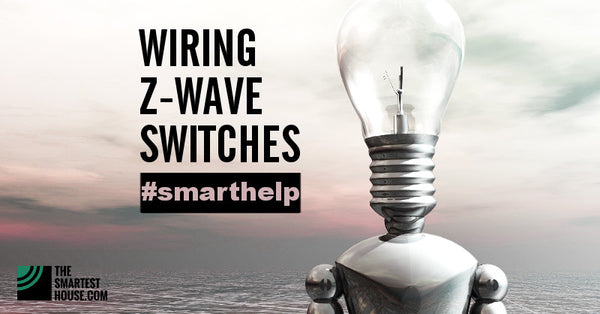- Home
-
Shop By Brand
-
Product Type
-
Hubs and Controllers
-
Lighting Controls
-
Sensors
- Water Valves
- Smart Plugs
- Sirens and Chimes
- Range Extenders
- Thermostats
- Blinds and Shades
- Cameras
- Accessories
-
-
Shop By Hub
- Value kits
- Pro Portal
-
Help




Scott Bemis
January 25, 2018
This is for unsual results when wiring in GE/Jasco switches and also a Leviton Decora DZ15S on the same switch (same circuit); same gang box; single pole connection
After turning the circuit breaker on and off at the correct times, this what I have done.
With circuit live and all the wires (no switch)
Verify neutral (white wires) are neutral, 0 (zero) between neutral and ground (ground are the bare copper wires pigtailed)
Verified the load or hot, live circuit, 120 V between load and ground; 120 V between load and ground; 120 V between load and neutral
Verified the line is 0 (zero) volts between line and neutral, and line and ground
Checked for continuity between neutral and ground; there is continuity – neutral and ground are connected, hopefully back at the panel
Connected switches per the provided instructions
With the circuit off via the circuit breaker
Load/hot wire connected to load on switch (bk on the Leviton)
Line wire connected to line on switch (rd on the Leviton)
Neutral wire connected to Neutral on the switch (wh on the Leviton)
Ground wire connected to ground on the switch
Energize circuit
With the Ge/Jasco switch, nothing happens, locator LED always remains off with even after multiple resets of the switch (led should blink on the switch for resets); switch cannot be found by Zwave controller after following the instructions for inclusion mode (press paddle up or down once)
With the Leviton, locator LED is on (set to default of on when there is no load) when the circuit is energized
Turn Leviton switch, light controlled by switch turned on for several seconds, in the meantime, the switch locator LED flashes amber, then it flashes red about 5 times, the light controlled by the switch goes off, and the switch locator LED turns on, indicating no load (which matches the light as it is off)
Is there something wrong with how neutral is connected back at the panel? Or something else? As a side note, I BRIEFLY connected the neutral on the switch to ground, and then the switch works. For anyone reading this, in general, please do NOT do this. Use the neutral wire for neutral on the switch. I BRIEFLY did this only for troubleshooting AND made sure I did not touch any grounded device (ex. a metal computer case) . I have removed the ground wire from neutral; I re-connected the neutral wire back to neutral on the switch.
- end -